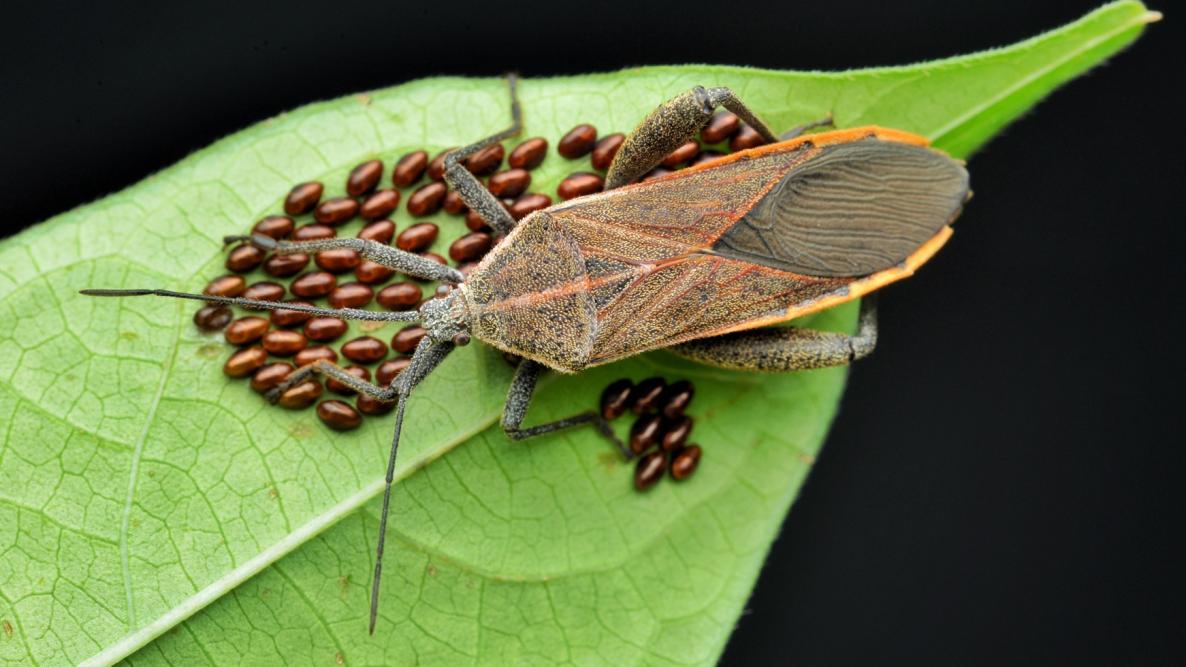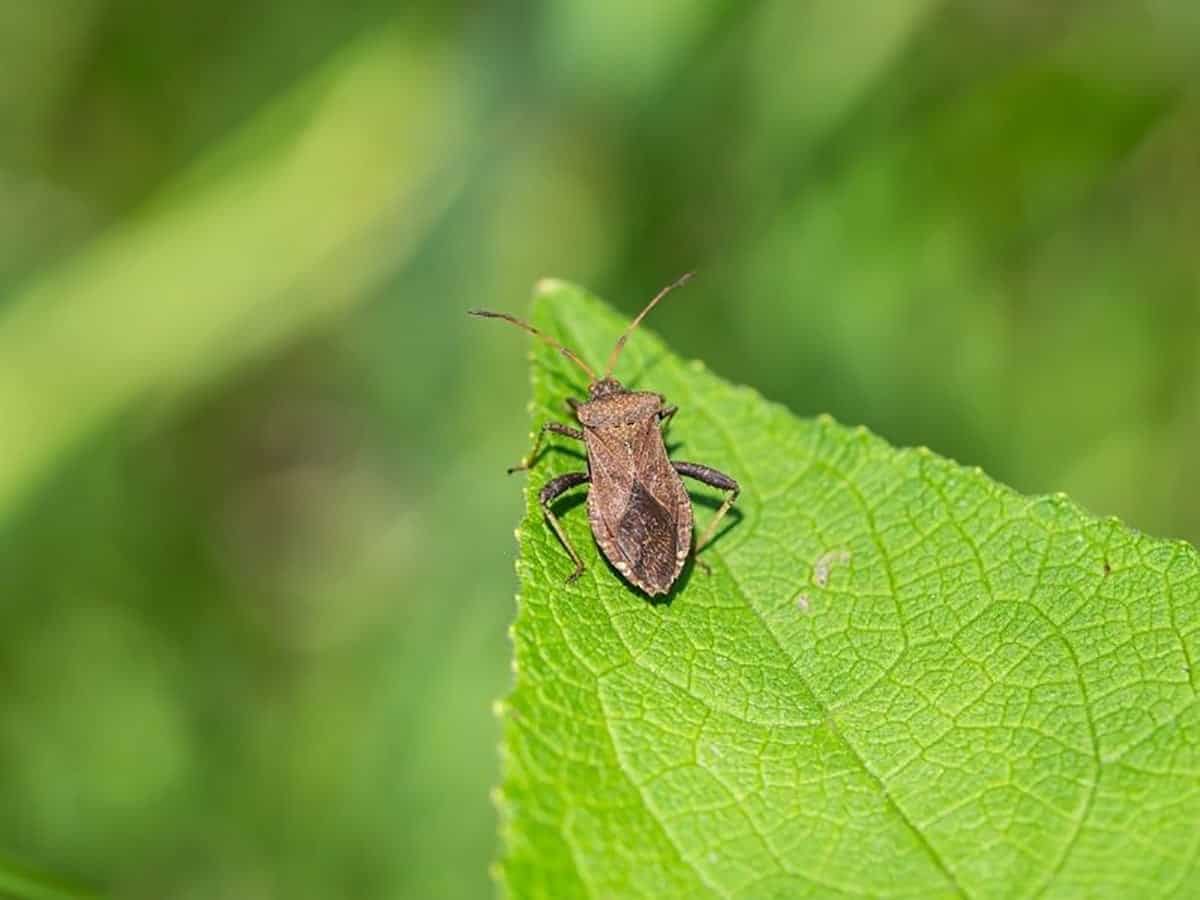How To Get Rid Of Squash Bugs
The squash bug is one of the most dreaded pests of home vegetable gardens, especially when it comes to growing squash. This insect feeds on the leaves, stems and fruit of squash plants and can cause significant damage to an entire crop in a very short amount of time.
Without quick action, it's entirely possible to lose an entire harvest due to squash bugs. Fortunately, there are several methods you can use to get rid of these pesky pests without having to resort to harmful synthetic chemical pesticides.
What Are Squash Bugs?
Squash bugs (Anasa tristis), often referred to as stink bugs, are a species in the family of true bugs. As their name suggests, these insects primarily feed on squash and pumpkins, but also eat other members of the cucurbit family.
Native to North America, squash bugs can often be found congregating on the leaves and stems of plants. They typically penetrate the plant with their needle-like mouthparts and suck out its sap which damages or kills off portions of the plant tissue.
While they are less likely to feast on cucumbers or watermelons, they commonly cause problems for summer and winter squashes as well as pumpkins and gourds.
When disturbed or injured, squash bugs emit a foul odor that is meant to ward off predators. This unique odor has earned them their infamous title – stink bug. Squash bugs have developed various defense mechanisms intended to protect them against natural enemies such as birds and lizards.
What Does Squash Bug Damage Look Like?
Squash bug damage is very distinctive and can be easily identified. On the squash leaves, mottled yellow spots will form that eventually turn brown. Severe infestations can cause the leaves to turn a dark brown color, become crispy and dry.
Squash bugs are also known to feed on the developing fruits of squash plants, typically at the stem end which causes sunken and pale areas leading to fruit rot. The good news with squash bugs is that unlike cucumber beetles, they do not spread bacterial wilt.
It is important for gardeners who grow squash crops to always keep an eye out for signs of damage caused by these pests in their garden beds or even on fruit purchases from the grocery store so that immediate action can be taken to prevent them from spreading further among the plants.
Why Learning How To Get Rid Of Squash Bugs Is Important
Learning how to get rid of squash bugs is important for two main reasons. First, controlling squash bugs during the current growing season will ensure that fewer will overwinter and lay eggs the following spring. If the population gets out of control, it can be extremely difficult to manage the pest in the garden.
Prevention is key when it comes to managing any pest in the vegetable garden, and so in order to prevent an invasion of squash bugs, growers must keep clean up debris at the end of each growing season and avoid using loose mulch products like straw or hay as they are favorite hiding spots for these pests.
Methods On How To Get Rid Of Squash Bugs
Many pesticides are ineffective against squash bugs due to their feeding behavior and strong exoskeleton, which means that using these chemicals may pose a greater risk to humans than to the bugs themselves. To safely and organically eliminate squash bugs, there are several strategies you can employ.
Grow Resistant Varieties
Growing resistant varieties of squash can help protect your crops from the pesky and destructive squash bug. While no single variety is entirely resistant to the insect, certain types are less attractive and more tolerant of damage caused by them.
Butternut, Royal Acorn and Round Zucchini varieties, like Eight Ball, are some of the most resilient choices you can make as a gardener in warding off these bugs.
To reap the full benefits of each type’s resistance, it is important to follow proper planting and maintenance protocols.
Be sure to thoroughly disinfect any garden tools used when tending to your crops, rotating the location and timing you plant squash in order to break any possible life-cycles of the squash bug, or adding various plants (like basil!) that may act as repellents and confuse their senses while they try to locate food sources.
Taking these steps will help ensure that you have a healthy crop of squash with limited interruption from squash bugs.
How To Get Rid Of Squash Bugs Using Companion Planting
Squash bugs are a common pest found in vegetable gardens, and can do much harm to your crops if not dealt with properly. However, there is an effective solution which involves companion planting.
Companion planting is the practice of interplanting different kinds of plants in the same area to create a mutually beneficial environment. It is a great way to naturally control pests like squash bugs without using any harsh chemicals.
When attempting to get rid of squash bugs using companion planting, combine zucchini with nasturtiums or grow tansy with winter squash plants. Research conducted by Iowa State University showed that this combination resulted in reduced squash bug egg laying and damage to summer and winter squash crops.
Additionally, growing your squash in mixtures of plants instead of long rows will make it less likely for pests to congregate in one area. Following these steps should keep your plants protected from these common garden pests and result in healthier crops and higher yields.
Attract Beneficial Insects To Control Squash Bugs
Many gardeners often overlook the potential of beneficial insects to help in the fight against squash bugs. By developing a garden friendly to spiders and other insects, natural predators can be attracted that will help reduce squash bug populations.
Spiders are particularly useful as they hunt for their prey, almost exclusively at night. Though they should not be classified as an insect, they do fit into the beneficial insect category.
If you wish to attract beetles or wasps that will feed on squash bugs, then there are certain plants you can include in your garden that can provide shelter and food sources for these beneficial creatures.
Plants such as daisies, clover and asters provide food for adult beneficial insects while plants like goldenrod create structures for eggs to hatch upon when laid by predatory mites or ladybugs. These species will definitely help keep squash bug populations in check!
Use a Physical Barrier
Physical barriers are an effective method of controlling pests in the vegetable garden. Row covers, fine screening, insect netting, and tulle fabrics can be used to protect squash plants from an infestation of squash bugs.
These barriers should be placed over the plants when they are young and left in place until they come into flower. This will provide protection from feeding adult squash bugs as well as their eggs, helping to reduce damage and disease transmitted by them.
How To Get Rid Of Squash Bugs With Duct Tape
Squash bugs can be a nuisance for gardeners, as these pesky little insects feed on the leaves of your squash plants, leaving behind unsightly spots and wilted foliage. Thankfully, using duct tape to get rid of them is an easy and effective solution.
To start, wrap a piece of duct tape around your hand with the sticky side out. Then check your squash plants for clusters of bronze-colored eggs and use the duct tape to collect them by tapping it against the egg cluster. This same technique can also be used to gather young nymphs, as well as any adult squash bugs that are present on the plants.
How To Handpick Squash Bugs
Handpicking squash bugs is a simple, yet effective way to keep their population in check. By thoroughly scanning your plants for the small, threatening pests, you can spot the adults and pick them off the leaves and stems.
Before discarding them, it's a good idea to submerge them in soapy water to ensure they have been eliminated. If you don't have access to soap and water, you can also use pruning shears or scissors to swiftly snip them in half.
It might seem like a cruel option that won’t be forgiven easily by animal-lovers; however, it will at least guarantee the disposal of these potentially hazardous bugs that could otherwise destroy your plants.
Using Squash Bug Traps In The Garden
Using squash bug traps in the garden is an easy and relatively effective way to reduce an infestation of these pests. One of the simplest techniques is to lay wooden boards or pieces of cardboard directly beneath squash plants, which will attract the bugs during evening and night hours.
In the morning, risks can be lifted up and the bugs brushed into a bucket of soapy water. This won't get rid of all the squash bugs, but it will reduce their numbers significantly.
Another trap that works well is placing shallow bowls underneath squash leaves filled with two tablespoons molasses, a splash of cider vinegar, and some water. The squash bugs are lured by the smell and are unable to climb out once trapped inside.
Spray Products For Controlling Squash Bugs
Insecticidal soap is often recommended as an organic spray method for controlling squash bugs. This fatty-acid based product breaks down the soft exoskeleton of both squash bug nymphs and eggs on contact. However, it is not effective against adults so for the best results, it needs to be sprayed during the early stages in the bug’s life cycle.
Another organic spray that is sometimes recommended is neem oil. While this can be an effective treatment against insect infestation, I have some hesitation in recommending it due to its potential systemic properties.












